
On demand Emerson oxygen rebreather

Here is a page about a unique rebreather with an on-demand system built into the contralong. This specific model with the abstract name 9-SO-21 was also called Scuba-Lung. The oxygen system with separate contralungs had a double demand system which regulates the demand of oxygen with typical spoons operating a valve. The levers are interconnected so as to limit the occurrence of positional free flowing when sections of a lung or loop would collapse or become inaccessible, reducing the available volume to the diver.
The demand system is certainly not a new idea because in the thirties there were already systems in the mining industry where a valve was operated in the lung as well as outside the lungs with siphons. I do not know if there were any earlier models before 1963 with such a system for underwater applications.
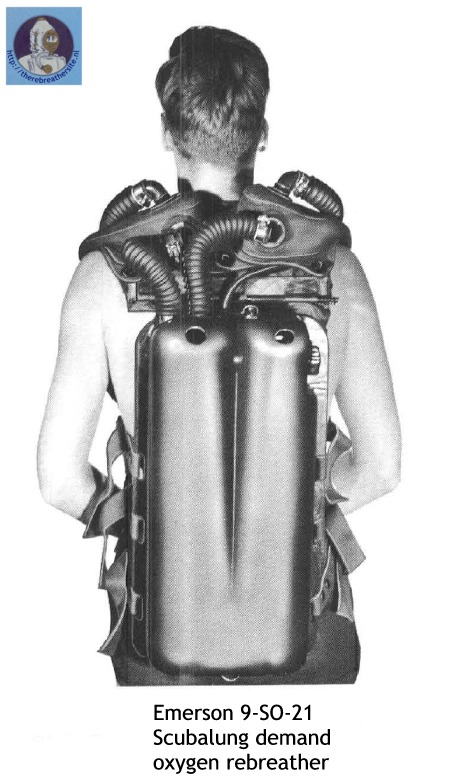
The unit on display was build by J. H. Emerson Co of Cambridge, MA. Emerson had a major influence in the development of US Navy UBA’s (underwater breathing apparatus) during the 1950-60’s, they collaborated with Dr Lambertsen to mass produce his Lambertsen Amphibious Respiratory Unit, the LARU. This developed into other units, such as the Emerson-Lambertsen, the Flatus and the workhorse of the USN, the Mk 6.
The first photo (from Patrick Duffy) after the patent info is from the DEMA display and is the rear of Kent Rockwell’s ScubaLung he’d restored. Another image provide by Sharon Readey shows the front of the unit
It weighed 35lbs, and had a variable duration depending on the depth – typically four hours at 10 ft or 75 minutes at 25ft. The entire unit is mounted on a simple back pack/vest combination, with a glass fiber housing that encases the quick disconnect scrubber and oxygen bottle of 12.7 cu. ft. A reserve valve and rod are provided as a low oxygen warning device.
This Emerson 9-SO-21 Scubalung shown on the pictures was restored and loaned by Historical Diving Society member Kent Rockwell.
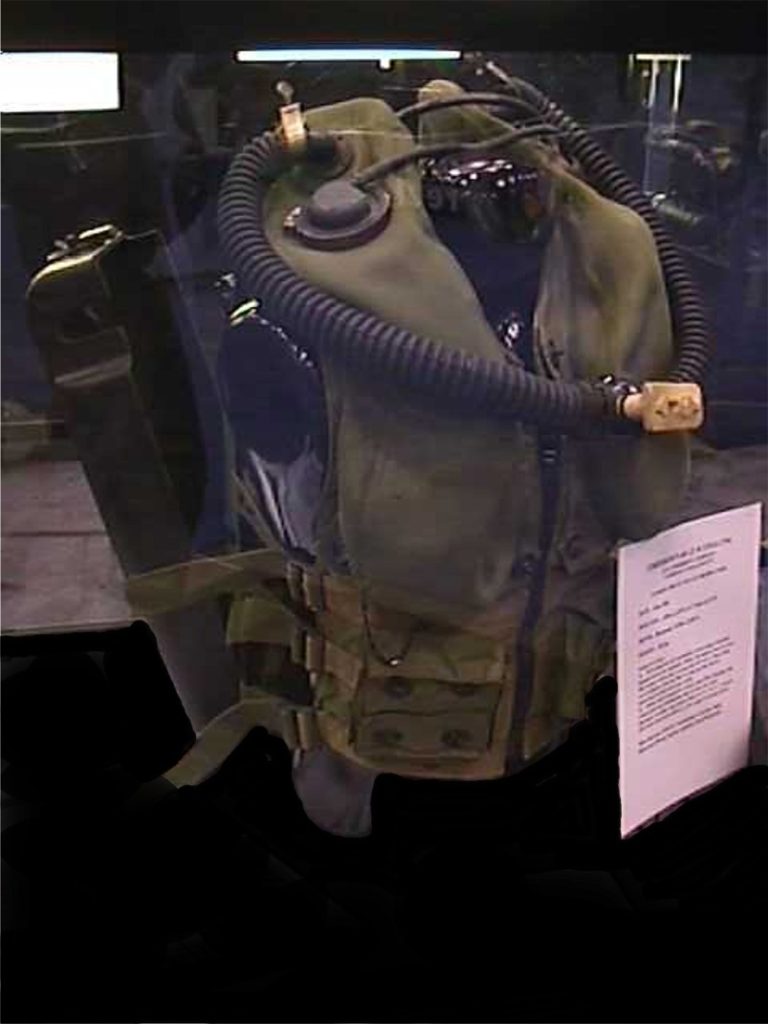

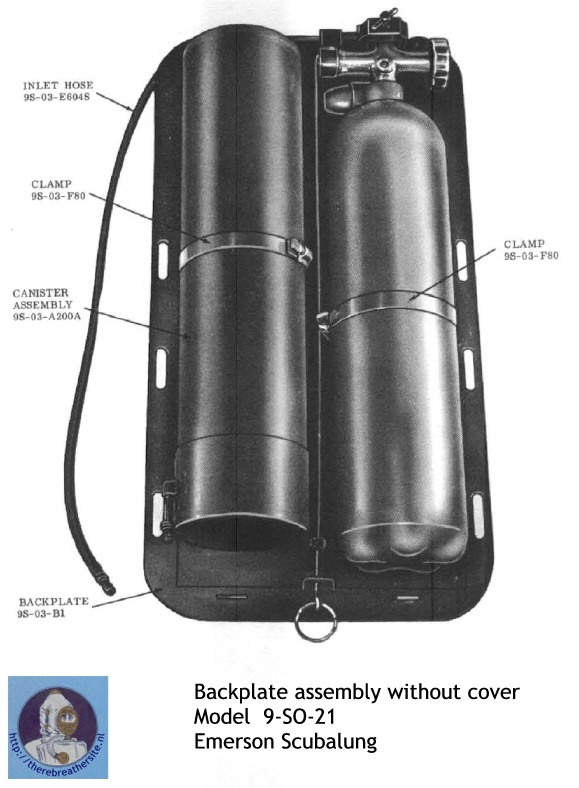
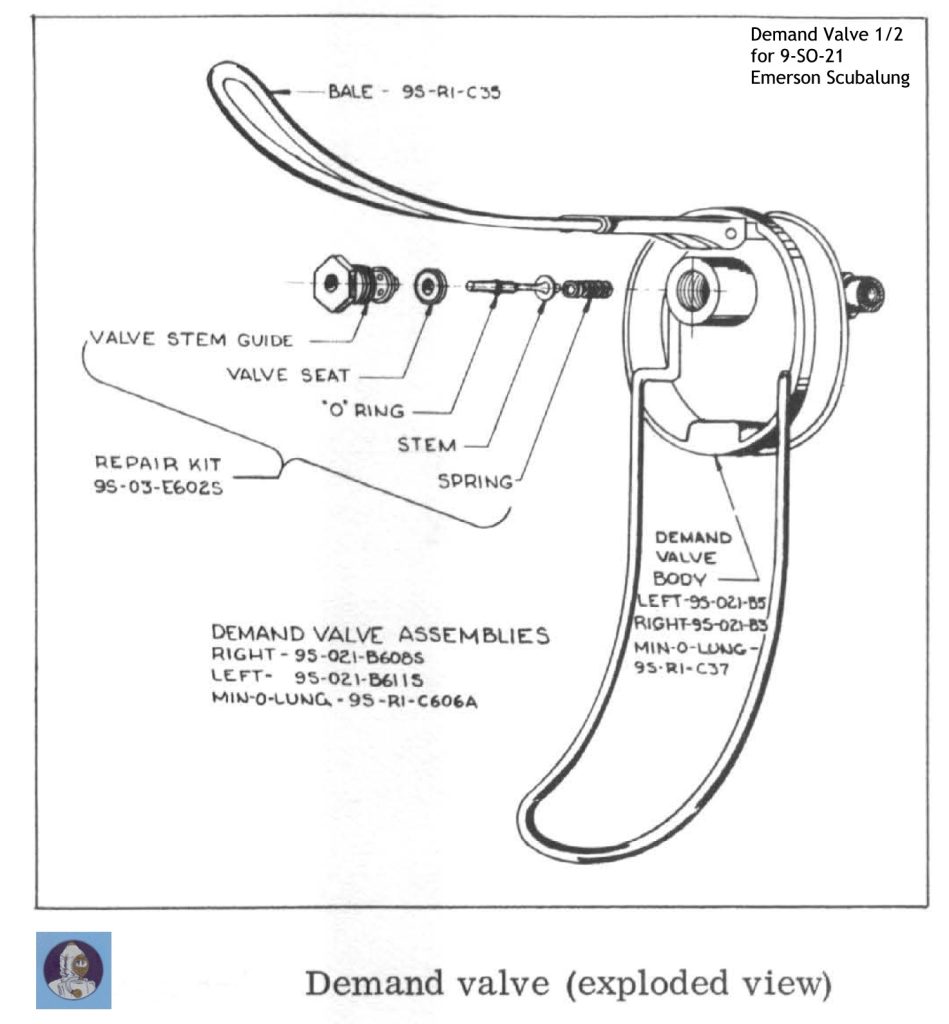

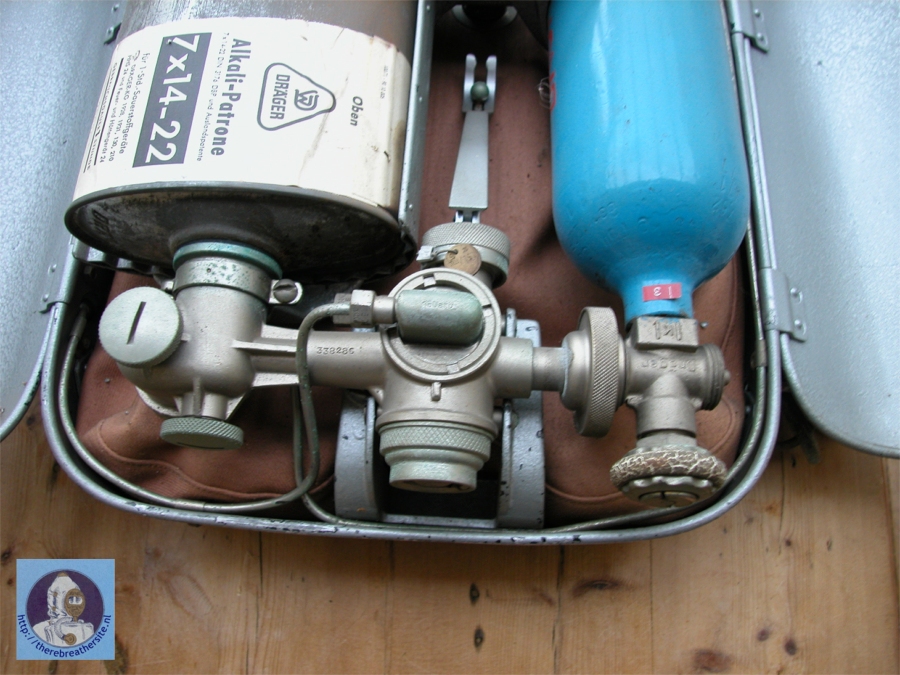
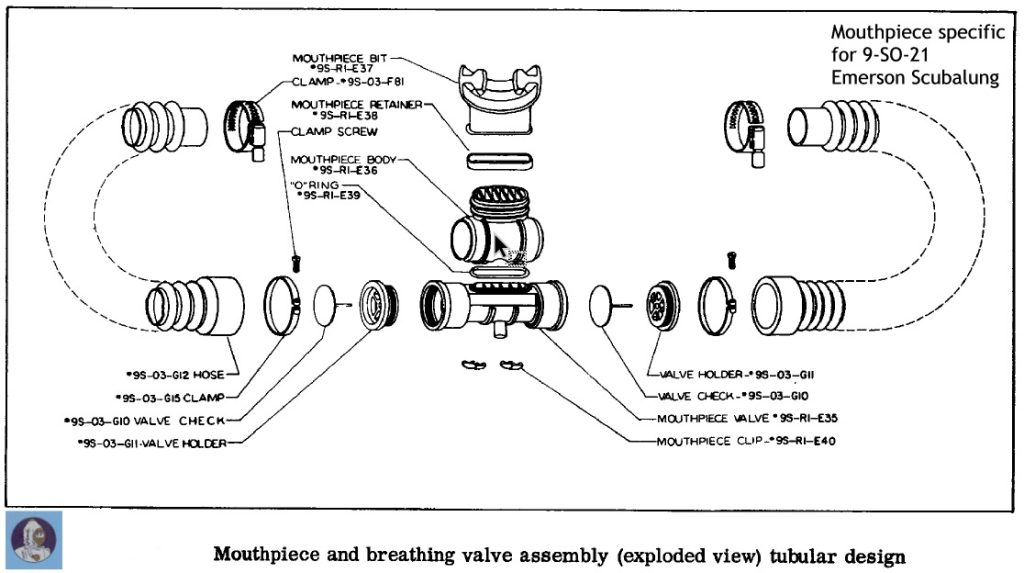
As pictures of this unit are very scarce, any picture or additional information is more than welcome. In the near future this unit will be introduced 60 years ago, it is striking how fast information about these old units can’t be found anymore. If you have an old manual, or pictures of the unit in use, I would like to add them to this page.
The following article on J.H. Emerson describes the extraordinary life of a great man, inventor and life saver. The article by Ciselle Meier and Mike Cadogan describes the life of Emerson in an outstanding way. I am very grateful to Mike Cadogan for permission to publish his article on this website!
John Haven Emerson
- Ciselle Meier and Mike Cadogan
- Jul 7, 2022
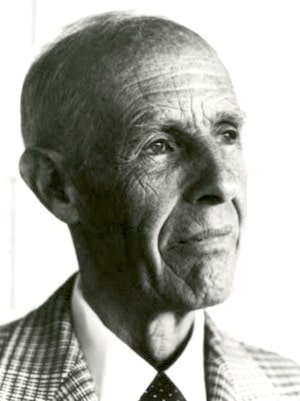
John Haven “Jack” Emerson (1906 – 1997) was an American inventor and humanist
Emerson is best known for his work on the iron lung where his improved design of the original respirator led to the Emerson Lung becoming mainstay treatment for polio patients. His invention is credited for saving thousands of lives during the 1950’s epidemic
Emerson held 35 patents during his career and developed many innovative devices including the first volume ventilator and adult ventilator with an IMV mode; oxygen tents; humidifiers; rescue resuscitators; rocking beds; pleural suction pumps; blood oxygenators; negative pressure chest respirators; warming lights; and mechanical in-exsufflators.
He was involved in the design and production of US army flow valves, scuba gear and a hyperbaric oxygen treatment tank. Emerson was also one of the first to recognise high frequency ventilation as an effective ventilatory technique.
Over the decades the company has developed many other innovative devices including the first volume ventilator and adult ventilator with an IMV mode, oxygen tents, humidifiers, rescue resuscitators, rocking beds, pleural suction pumps, blood oxygenators, negative pressure chest respirators, warming lights, hyperbaric chambers, and mechanical in-exsufflators.
Despite being a ‘high school drop-out’, Emerson’s ingenuity and drive is reflected in his many achievements with his contributions to respiratory medicine earning him an accolade from the American Thoracic Society, the first non-physician to do so. His legacy continues in the company he founded
Biography
- Born on February 5, 1906 in New York City. Son of Dr Haven Emerson; New York City Commissioner of Health for many years, and the force behind the quarantine of families during the 1916 polio epidemics
I didn’t do very well in school at all. I never graduated from high school. My family sent me up here, because everybody went to Harvard or Radcliffe. That was traditional in my family. In fact, my father told me if I didn’t go, I’d be the first Emerson since they landed on the shores of Ipswich – but that’s me! My brother, who was in plant physiology at Harvard, got me a job in the physics lab. I swept floors and learned how to oil lathes and machine stuff.
Emerson 1985
- 1928 – founded the J.H. Emerson Co. in Cambridge, Mass., to design and build medical research apparatus to order. Designs and produces a Barcroft-Warburg apparatus for tissue respiration studies for the Harvard Botany Department.
- 1930 – on the suggestion of his father, Emerson begins work on designing and improving upon the iron lung of Philip Drinker (1894-1972); he launches the ‘Emerson Lung’ one year later in 1931. It was far superior to the Drinker product. Instead of a blower it employed a silent leather diaphragm. It was adjustable to any respiration rate, and more than half the price.Its first use occurred at Chapin Hospital in Providence for a moribund patient with poliomyelitis who successfully recovered following treatment with Emerson’s Lung.
They had four Drinkers in use…[The patient] was a young priest. They said “He’ll die at night, We have no way to…we have no place to…” we tried – so, we put the patient in – it worked perfectly. It ran for six months. The patient lived, and we decided we’d try and make iron lungs
- 1940s – develops high altitude, demand flow valves for the US Army Air Corps to allow for better altitude tolerance
- 1953 – designs and submits a patent for an ‘airway vibrator’ after observing the breathing patterns of panting dogs; his device introduces the novel idea of high frequency ventilation. This lays the foundation for modern high frequency ventilation techniques which only gain traction much later down the track
- 1960s – designs and improves upon US Navy scuba gear, also builds a hyperbaric oxygen tank
- 1964 – develops a piston driven, volume-preset positive pressure ventilator and becomes one of the first commercially successful adult intermittent mandatory ventilators. Designs later a Water Column PEEP Valve for use as a low flow resistant exhalation valve
- 1978 – Henry D. Chadwick Medal from the American Thoracic society for his contributions to respiratory medicine including the Iron Lung, Oxygen Tent and IPPB; he is the first non-physician to receive this award
- Died on February 4, 1997 of pancreatic cancer
Medical Eponyms
Emerson Iron Lung
The first example of Emerson’s improved iron lung, nicknamed “Old Number One” is on display at the Smithsonian in Washington, D.C. Completed in July 1931, it was first used in the summer of that year at the Providence City Hospital, Providence, R.I.
It functioned in a similar manner to the iron lung as a negative pressure ventilator where a system of bellows would ‘suck’ air out of the box and cause the lungs to automatically expand from the created negative pressure. As air was pushed back into the box, the increasing pressure caused the lungs to deflate passively.
Emerson’s design incorporated a bed slide so the patient could be moved easily in and out of the cabinet and added portholes on the side to allow for access to the patient without loss of air pressure. A leather diaphragm replaced the noisy vacuum-cleaner blower, a hand pump was added so that ventilation could be manually delivered in case of electrical failure and the gears for controlling respiratory rate were simplified.
The Emerson lung was superior in function and much more economical than the Iron lung and at half the cost as well as a growing epidemic; its use superseded that of the original iron lung.

Other Eponyms
Emerson Warming Lights
Commencing in 1980, major hospitals all over the United States and Canada used Emerson Warming Lights to maintain or restore thermal environment and provide increased illumination for procedures when needed.
Each Warming Light consists of two adjustable 250-watt infrared lamps that are enclosed in protective housings with screening over the face of each light. Each housing swivels independently in two directions and can be easily adjusted to most any desired position. An asymmetrical base slips easily under beds or cribs, staying out of the way of personnel. [Warming lights brochure]
Emerson Post-Operative Suction Pump
Post-Operative Thoracic Suction Pump, used where continuous thoracic suction was needed. The Emerson Post-Operative Suction Pumps Models 55-JA and 55-JST may be operated intermittently for gastric decompression, or continuously for pleural drainage. Both come with timers: 55-JA is adjustable, and the 55-JST is nonadjustable. Intermittent gastric suction offers the marked advantage of relieving distention, yet avoids extreme electrolyte depletion [Suction Pump brochure]
Major Publications
- Emerson JH. The evolution of iron lungs. Cambridge MA, J H Emerson Company. 1978 [50th Anniversary edition 1928-1978]
- Emerson JH. Some reflections on Iron Lungs and other inventions. Respiratory Care, July 1998; 43(7): 574-583 [Transcription of lecture presented by Emerson to the Department of Anaesthesia Critical Care at Massachusetts General Hospital in 1985]
Controversies
Following the launch of his respirator, Emerson became embroiled in a court case with Philip Drinker, the inventor of the original iron lung also known as ‘The Drinker.’ Drinker attempted to sue Emerson for patent infringement; ironically Emerson was able to prove that the design of the iron lung used prior patented technology that had existed since the late 1800s and therefore invalidate the claims held against him.
I asked the Boiler Works to make five more tanks. News got around here in Boston that I was doing this. And I decided that I would try to show it at the American Hospital show, which was coming up in Toronto. So, I had a call from Drinker… He came into my shop and told me if I tried to make this iron lung he’d put me out of business… But we went ahead and completed the machine
a French iron lung… saved the day in the lawsuit for us… Everyone there had thought that Drinker was the only thing, see. And we found people that had this idea in many countries, a good many people in this country.
Emerson 1985
Drinker lost both the court case and his entire panel of patents. The response from Emerson – “not bad for a high school drop out”
References
Biography
- Obituary: J Emerson; Iron Lung Designer. The Boston Globe Feb 7, 1997
- Banner MJ, Kirby RR. Mr. Jack Emerson–a matter of life and breath. Chest. 1997 Aug;112(2):307-8.
- Branson RD. A Tribute to John H. Emerson. Jack Emerson: Notes on his life and contributions to respiratory care. Respiratory Care, 1998; 43(7): 567-571
- Bech JW. American Oxygen Rebreathers. Rebreathersite
- John Haven Emerson. In: Legends Of Respiratory Care, American Association of Respiratory Care
Eponymous terms
- Griscom S. Paralysis and Profits. The Polio Chronicle June 1933; 11(2): 4 [HTML]
- Scott F. The baby in the bottle: The saga of tiny Angela Lakeberg. Advance for Respiratory Care Practitioners, September 20, 1993.
- Scott F. Emersons battle miles of icy roads to deliver vent for Angela Lakeberg. Advance for Respiratory Care Practitioners, February 14, 1994.
- Bause GS. Emerson Respirator or “Iron Lung”, Anesthesiology 2009; 110: 812
- Dhawan N. Philip Drinker versus John Haven Emerson: Battle of the iron lung machines, 1928-1940. J Med Biogr. 2020 Aug;28(3):162-168.
- Respiration Without Breathing – An Amazing Machine. Ayn Rand Institute
- Emerson Iron Lung. National Museum of American History.
Cite this article as: Ciselle Meier and Mike Cadogan, “John Haven Emerson,” In: LITFL – Life in the FastLane, Accessed on July 7, 2022, https://litfl.com/john-haven-emerson/.

Therebreathersite was founded by Jan Willem Bech in 1999. After a diving career of many years, he decided to start technical diving in 1999. He immediately noticed that at that time there was almost no website that contained the history of closed breathing systems. The start for the website led to a huge collection that offered about 1,300 pages of information until 2019. In 2019, a fresh start was made with the website now freely available online for everyone. Therebreathersite is a source of information for divers, researchers, technicians and students. I hope you enjoy browsing the content!
